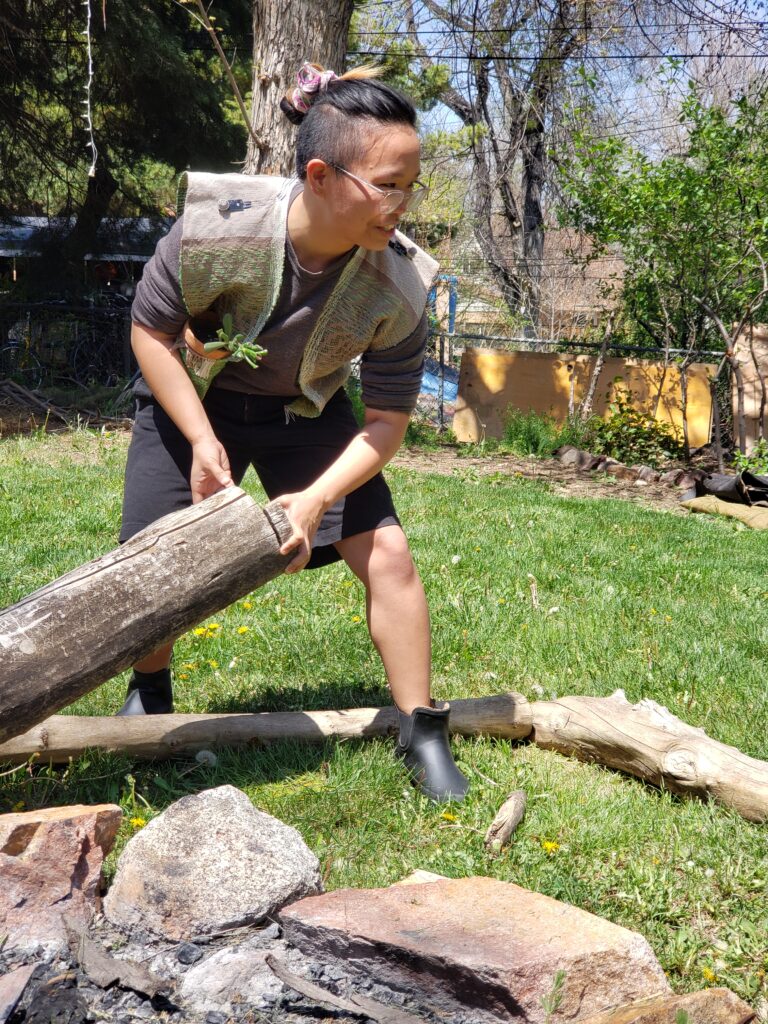
Artist Statement

How do individuals’ experiences with race, gender, socioeconomic class, and other personal/political identities influence their relationship with their environment (including local/global ecosystems and climates) and their attitudes towards potential climate change?
— my personal anthropological question, February 28, 2020
This woven garment, which I’ve been calling the “Ozone Safety Vest”, is an exploration in designing a wearable smart textile device in response to anthropological research. At the start of our project on ozone pollution, I always had in mind some sort of woven piece to comprise a portion of my work. However, my personal anthropological question that emerged around the same point seemed at odds with that urge. How could I weave something that would speak to so many facets of a person’s experience, that would speak to multiple experiences, and that would speak to their environment?
Then why was I so fully wed to the idea of weaving a piece? Besides being unreasonably stubborn, I saw many connections in the entangled yarns of our group project. One node was the project’s context, that it built upon the TOAR project. As a multi-national initiative that built a global dataset over the span of several years, TOAR is the dictionary definition of “big data”. To me, it represented a push to quantitatively understand a worldwide issue, breadth-wise. And now, as part of moving depth-wise, anthropological research could form a microscopic, deeply personal view of the issue. I also found the Ozone Garden project inspirational in this vein, creating a tangible, qualitative representation of ozone pollution.
This connection resonated with other work in my research group. Our lab researches smart textile design, integrating textile and digital technologies by handweaving circuitry and sensors into cloth and questioning the values ingrained in our technology. We want to provoke people into drawing their own connections between their experiences, their devices, and the world. One of my colleagues has been using their personal data to generate knit and crochet patterns, creating touchable visualizations that also challenge the wearer to think about data privacy. I saw a way to explore a different relationship between garment and data; instead of data generating the garment, the garment generates data.
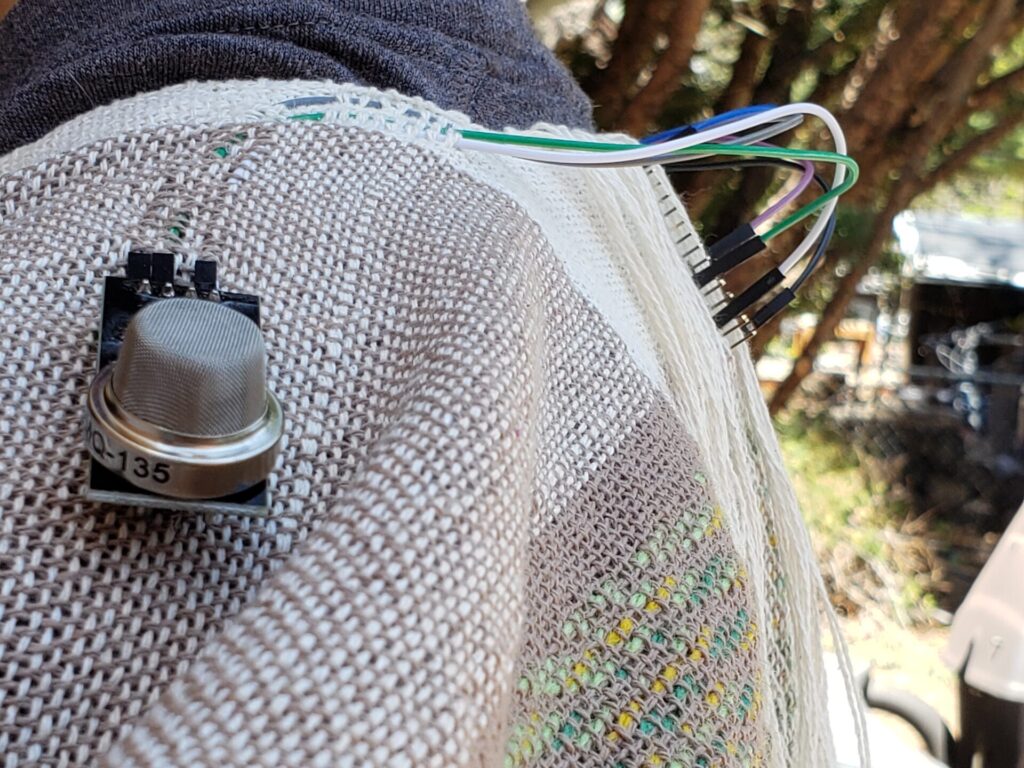
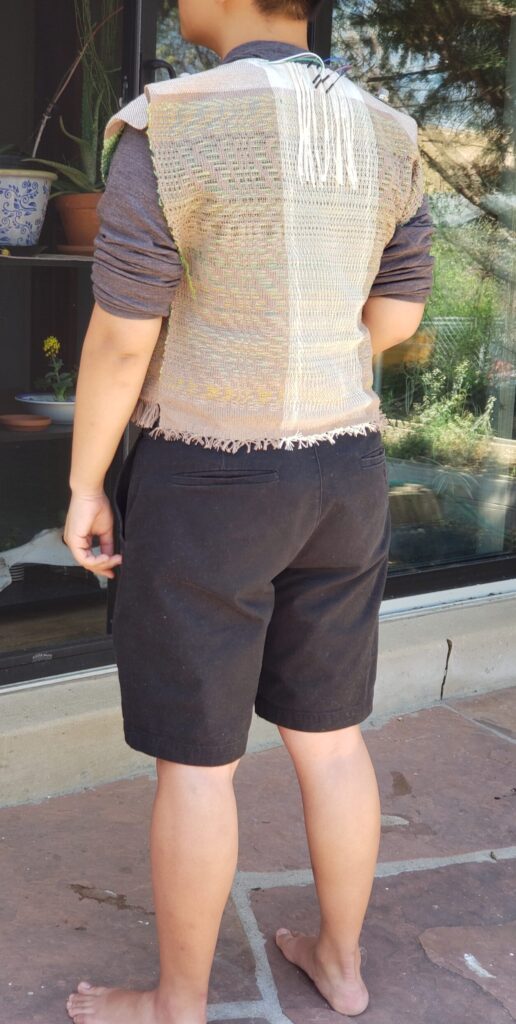
Fitting in my anthropological question was partly that stubbornness, and partly a response to the pandemic. With social distancing limiting the group to remote interviews and an online survey, I didn’t have much opportunity to steer the conversations to dig into our participants’ experiences with race/gender/class/etc. So without that input and with pandemic isolation giving me lots of time with my own thoughts, I reflected on my own identities and my relationship with the land around me.
While we’re acknowledging land, I’m a settler on Ute/Cheyenne/Arapahoe land. Since moving to Boulder and intentionally seeking out community with Black, Indigenous, and other people of color to stay grounded, I’ve had an ongoing internal debate with “settling” and making a home. My family settled on this continent almost 50 years ago, but I don’t feel like I’ve truly settled anywhere, and that I’m a perpetual visitor. Like the ozone in the layers of our atmosphere, I feel like I could easily be taken to another state or country by violent chance.
My crafting started out with knitting and crochet, which could easily be packed into a bag and taken on the road. But then I started spinning, first with portable handheld spindles that could also be taken anywhere (with lots of stares from strangers), but then I got a spinning wheel. And now, as society began staying at home and battening down the hatches for the pandemic, I got this loom. While part of me has nightmares about some disaster forcing me to uproot and probably leave my equipment behind, another part of me feels that I’m putting stakes in the ground. For now, I’m here to stay. So here I am, living in the Colorado Front Range.
Having been in the area for two summers already, I did not know about the high concentrations of ground-level ozone in the region, nor had I ever noticed the “ozone alerts” that went out to the public. The garment that I wove aims to address my lack of awareness by translating the alert from my phone to my body. As my craft practice evolves with me, and as crafting continues to help me process my identity-related traumas, I can use my weaving to process my environment.
The Ozone Safety Vest, as mentioned with the photo captions, includes two types of sensors: digital and organic. Two digital air quality sensors (one for ozone specifically, the other for general airborne pollutants) are mounted on the shoulders, one on each side like epaulets. The organic sensor is a living plant that can be carried in the front pocket of the vest. Certain plant species that are extra-sensitive to ozone damage can serve as “bioindicators” (the succulent in the photographs is not one of those species, but was just chosen for demonstration) as they visibly react to high ozone levels in the air, with brown spots appearing on their leaves. Ironically, this sort of vegetation damage only appears when the plant is otherwise in good health, well-watered, and in plenty of sunlight. In order to keep their organic sensor functional, the wearer of the vest must care for it. But ultimately, they are still harming their plant companion, and by extension, their own body.

I chose the surface pattern and silhouette to further explore this aspect of embodying ozone’s harmful effects on people, other animals, plants, and the land. The body of the vest uses an undulating pattern formed by a brown background fabric and contrasting yarns in shades of green. On the outer face, the brown fabric is dominant, with the contrasting greens in thin lines. The appearance evokes the top surface of an ozone-damaged leaf, where brown damaged spots spread across the face and leave the original green only within the veins.
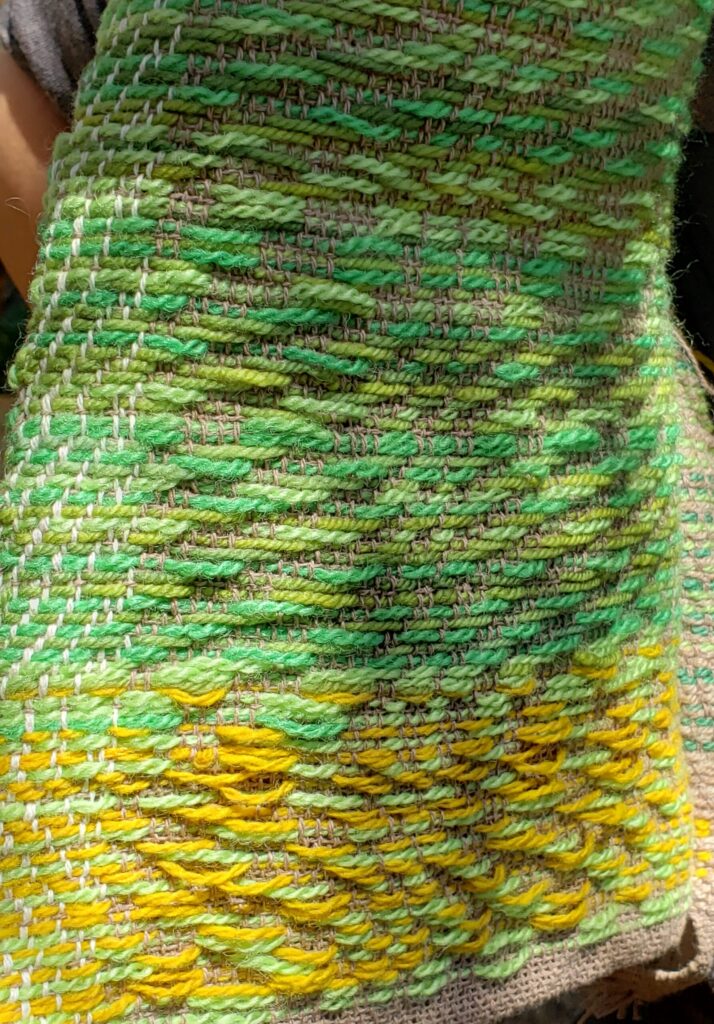
This sort of woven structure with a foundational background fabric and contrasting yarns “floating” across the surface in a pattern is called “overshot”, as the “floats” are normally over the top of the fabric. However, I have flipped the overshot pattern so that the floats are on the protected bottom, showing the vibrant colors that are lost if we do not protect our environment from damaging pollutants like ozone.
On the other side of time, the vest silhouette embodies the history of humans, their clothing, and the surrounding land. People have woven vests, ponchos, pants, and more for centuries, if not millennia. This vest is constructed from a rectangular cloth that did not need any cutting to be sewn into its wearable shape, like the earliest garments that people created to protect themselves from the weather and terrain.
With the interplay of ancient techniques and contemporary electronics, I see smart garments such as the Ozone Safety Vest in my vision for a sustainable, liberated future. While human actions are not completely the consequences of our tools and devices, our things put filters on how we interact with each other and the world. While the vest may not fit a lot of people besides me (I forgot to account for how fabric compacts during weaving, so it turned out small), I hope to have other people try on a conceptual smart garment like this one and study their reactions, or even have them make their own. My hope is that thoughtfully-designed and lovingly-crafted technology can help people think critically about a sustainable future and show them how to create their own piece of it.
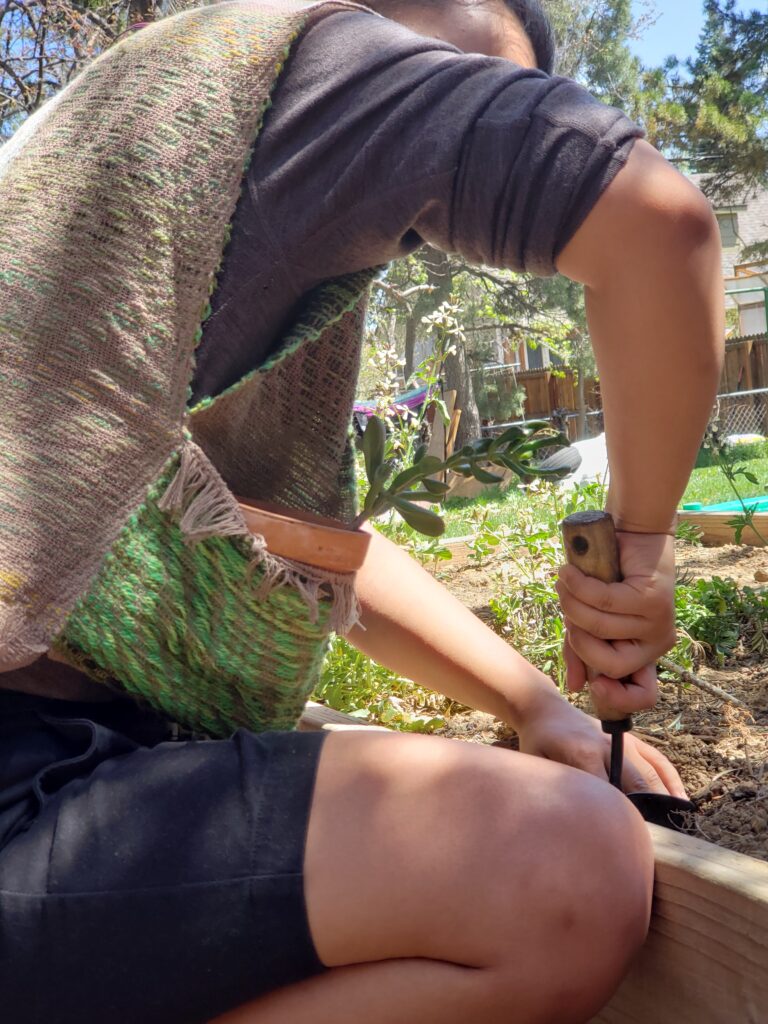
Thank you to my roommate, Gabriel Pezoa, for photographing me wearing the vest in our backyard!